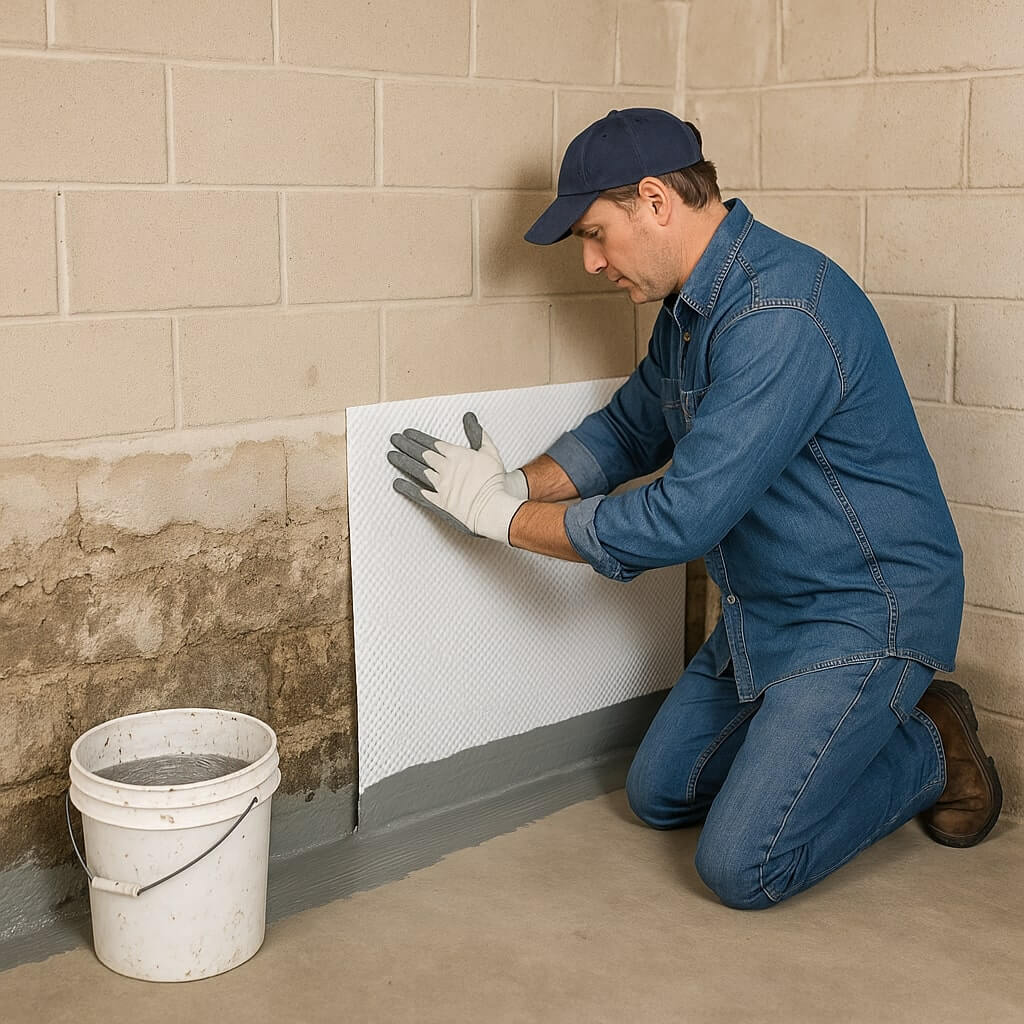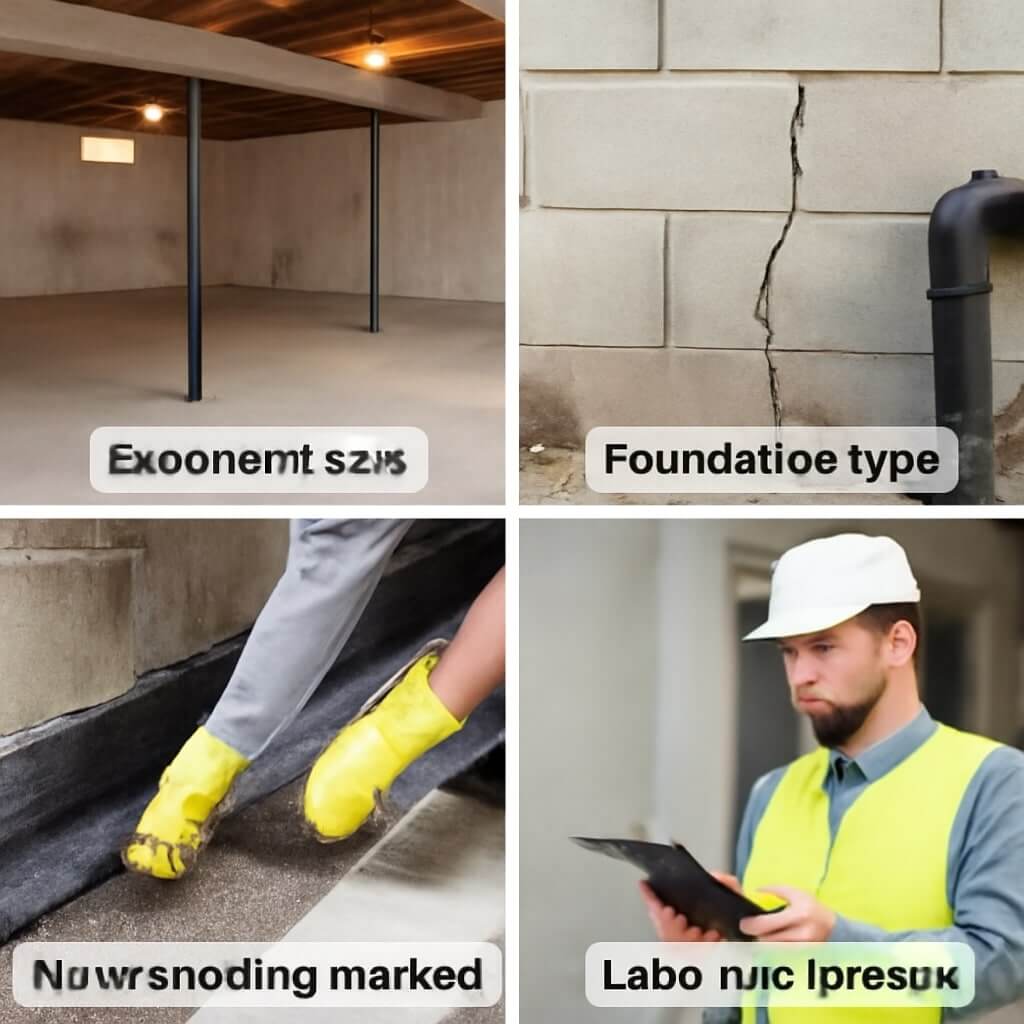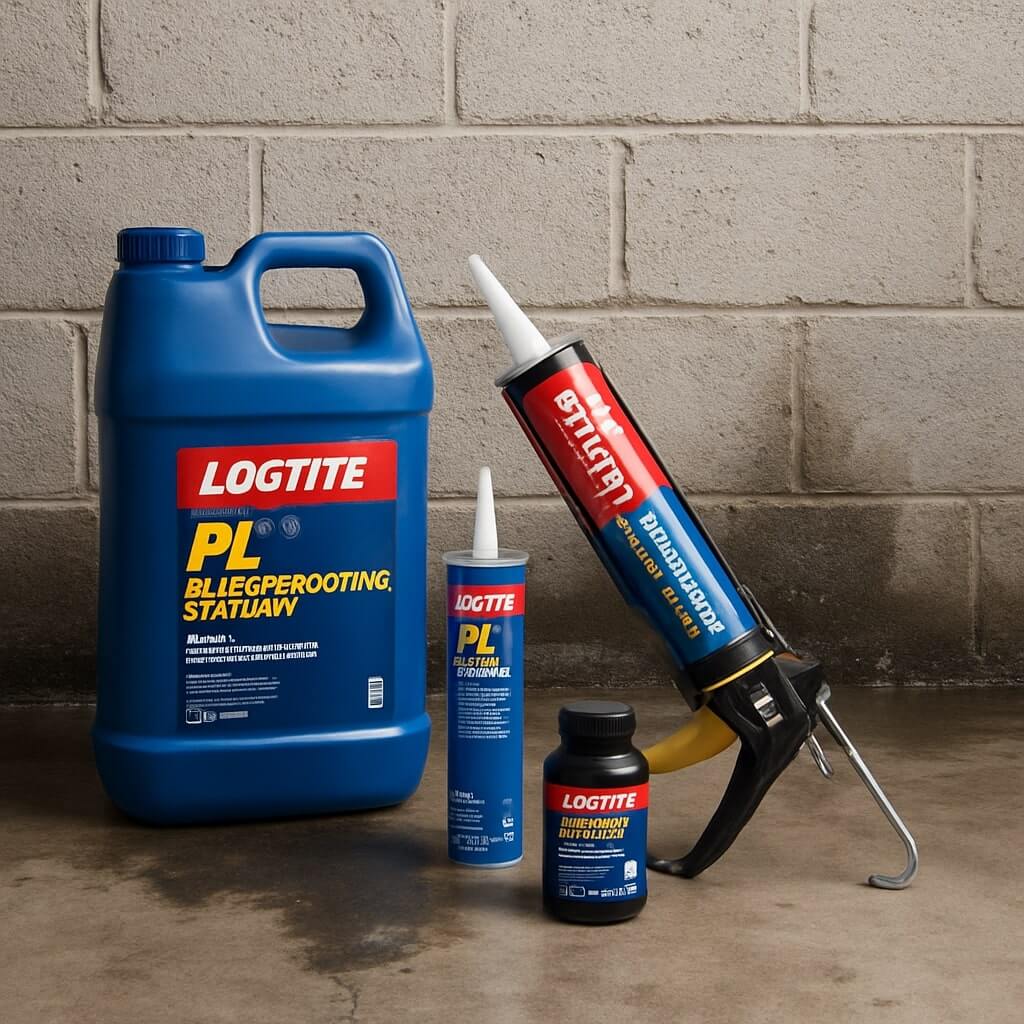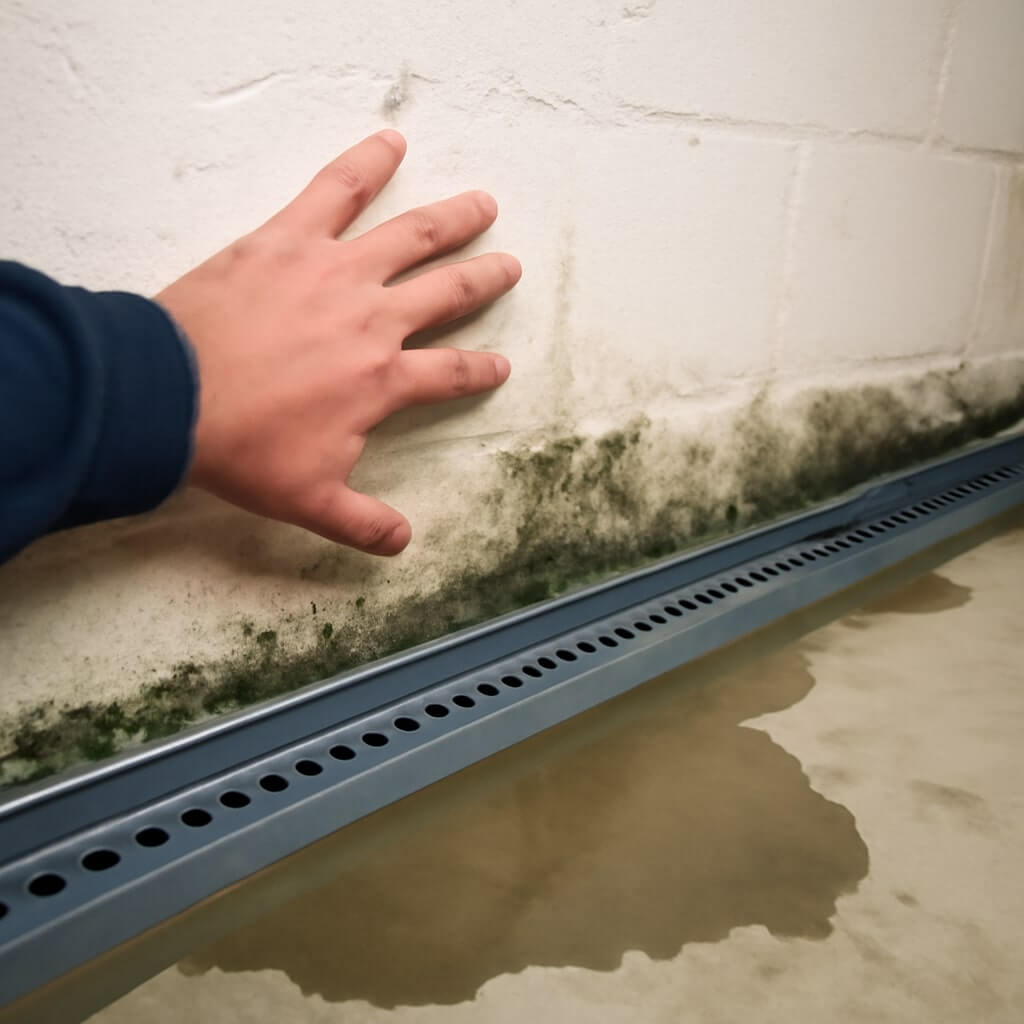If you’re dealing with a damp basement but want to avoid the expense of a sump pump, there are effective steps you can take. Start by evaluating your basement’s current condition and identifying any sources of water intrusion. By improving exterior drainage and sealing cracks, you can greatly reduce moisture levels. Want to know the best methods for waterproofing your basement effectively without relying on a sump pump? Let’s explore the essential steps.
Key Takeaways
- Assess and identify water intrusion sources by checking for cracks, moisture signs, and inadequate drainage around the foundation.
- Improve exterior drainage by grading soil away from the foundation and maintaining gutters to redirect water flow effectively.
- Seal visible cracks and holes in walls and floors using high-quality sealants and waterproof coatings for maximum protection against moisture.
- Control indoor moisture levels with proper ventilation, dehumidifiers, and maintaining consistent temperatures to reduce condensation.
- Regularly inspect and maintain drainage systems, ensuring runoff is directed away from the foundation to prevent water pooling.
Assessing Your Basement’s Current Condition

Before you can effectively waterproof your basement, you need to assess its current condition.
Start by checking for signs of basement moisture, such as damp spots or mold. Inspect the walls and floor for cracks that could allow water intrusion.
It’s also essential to evaluate your wall insulation; damaged or inadequate insulation can exacerbate moisture issues.
Pay attention to any areas where condensation forms, as this can indicate poor airflow.
Identifying Sources of Water Intrusion
To effectively combat water intrusion in your basement, you need to pinpoint where it’s coming from.
Start by inspecting your walls and floors for intrusion signs, like damp spots, mold, or peeling paint. Check for water sources such as leaks from pipes, condensation, or groundwater.
Look outside for improper grading or clogged gutters that could direct water toward your foundation. Pay attention to window wells and foundation cracks, as they often serve as entry points.
Improving Exterior Drainage
To effectively waterproof your basement, improving exterior drainage is essential.
Start by grading the soil away from your foundation to prevent water pooling, and maintain your gutter system to guarantee efficient water flow.
Additionally, consider implementing landscape drainage solutions to direct runoff away from your home.
Grading Soil Away
Properly grading the soil around your home is vital for effective exterior drainage, as it directs water away from your foundation and reduces the risk of basement flooding.
Start by evaluating the current slope; aim for a minimum of 6 inches of drop within the first 10 feet from your foundation.
Utilize soil compaction techniques to guarantee stability and prevent future settling.
Make necessary drainage slope adjustments to create a consistent incline, directing water away.
Regularly inspect and maintain this grading to keep your basement dry and protect your property from moisture-related issues.
Proper grading is a significant step in your waterproofing strategy.
Gutter System Maintenance
A well-maintained gutter system is essential for effective exterior drainage and preventing water from pooling around your foundation. Regular gutter cleaning guarantees that debris doesn’t block water flow, while installing downspout extensions directs water away from the house.
| Maintenance Task | Frequency |
|---|---|
| Inspect Gutters | Monthly |
| Clean Gutters | 2-3 times/year |
| Check Downspouts | After heavy rain |
Landscape Drainage Solutions
When heavy rains saturate your yard, effective landscape drainage solutions become essential to prevent water from accumulating around your home.
One practical method is to create drainage swales—shallow, sloped ditches designed to redirect water away from your foundation. Position these swales strategically to channel runoff toward designated areas.
Additionally, consider installing rain gardens, which are beautifully landscaped depressions that absorb excess rainwater. By incorporating native plants, these gardens filter pollutants while enhancing your yard’s aesthetic.
Implementing these solutions not only protects your basement from water damage but also improves your yard’s overall health and functionality.
Sealing Cracks and Holes
To effectively waterproof your basement, sealing cracks and holes is essential for preventing moisture infiltration.
Begin by inspecting your walls and floors for visible cracks. Use high-quality crack fillers to patch small fissures, ensuring a tight seal.
Inspect your walls and floors for cracks, and apply high-quality crack fillers to ensure a tight seal.
For larger gaps, consider using a polyurethane or epoxy sealant option, as these provide robust waterproofing protection. Clean the surfaces thoroughly before application, and follow the manufacturer’s instructions for best results.
Allow the sealant to cure completely before moving on to other waterproofing steps. By addressing these vulnerabilities, you can considerably enhance your basement’s resistance to water damage.
Applying Waterproof Coatings
While sealing cracks and holes is essential, applying waterproof coatings is the next step in ensuring your basement remains dry and protected.
Start by choosing high-quality waterproof coatings specifically designed for basements. Clean the walls thoroughly to remove dirt and debris, ensuring proper adhesion.
Use a roller or brush for even coverage, applying in thin layers for best results. Pay attention to corners and seams, using a paintbrush for those areas.
Allow each coat to dry according to manufacturer instructions before adding another layer. Following these application techniques will create a durable barrier against moisture, safeguarding your basement effectively.
Installing a Drainage System

Before you can effectively waterproof your basement, installing a drainage system is essential for managing excess water and preventing moisture buildup.
Start by choosing the right drainage materials, such as perforated pipes and gravel. Dig a trench around your basement’s perimeter, ensuring the trench depth is at least 6 inches to facilitate proper water flow.
Lay the perforated pipe at the bottom of the trench, surrounded by gravel to filter debris. This setup directs water away from your foundation, reducing hydrostatic pressure.
Finally, cover the trench with soil, ensuring proper grading to divert water away from your home.
Utilizing Vapor Barriers
Since moisture can seep through walls and floors, utilizing vapor barriers is essential for effective basement waterproofing.
You’ll encounter various vapor barrier types, such as polyethylene sheets and spray-on membranes. Choose the type that best suits your basement’s needs.
For installation, verify surfaces are clean and dry; then, measure and cut the barrier to fit snugly against walls and floors. Use adhesive or tape to secure seams and edges, preventing moisture infiltration.
Remember to overlap seams by at least six inches for maximum effectiveness. By following proper installation techniques, you’ll greatly reduce moisture-related issues in your basement.
Maintaining Your Waterproofing System

To guarantee your basement remains waterproof, you need to conduct regular inspections and maintenance.
Promptly repairing any cracks and managing drainage properly are vital steps in this process.
Staying proactive will help you prevent costly water damage and maintain a dry environment.
Regular Inspections and Maintenance
While your waterproofing system may seem robust, regular inspections and maintenance are essential to verify it continues to perform effectively. Schedule routine maintenance to check for signs of wear and ascertain all components function at their best.
| Task | Frequency | Tools Needed |
|---|---|---|
| Inspect gutters | Bi-annually | Ladder, flashlight |
| Check sealants | Annually | Caulking gun, sealant |
| Clean drainage paths | Quarterly | Garden rake, gloves |
| Monitor humidity | Monthly | Hygrometer |
| Assess sump system | Annually | None (visual check) |
Stay proactive to maintain a dry basement.
Repairing Cracks Promptly
Addressing cracks in your basement promptly is essential for maintaining an effective waterproofing system. When you notice any cracks, don’t wait—initiate crack sealing immediately. This prevents moisture from infiltrating your space and compromising your home’s integrity.
Use a high-quality sealant designed for basements to guarantee strong adhesion and durability. Before sealing, clean the crack thoroughly to remove any debris or loose material, allowing for better moisture control.
Regularly inspect your basement for new cracks and treat them as soon as they appear. By staying proactive, you’ll protect your basement from water damage and enhance your waterproofing efforts.
Proper Drainage Management
Effective drainage management is essential for maintaining your basement’s waterproofing system, as it directs water away from your foundation and prevents pooling.
To guarantee ideal water flow, regularly inspect your drainage systems for clogs or damage. Clean gutters and downspouts frequently, directing runoff at least six feet from your foundation.
Additionally, consider grading your yard to slope away from the house. If necessary, install perforated drain pipes to manage excess water efficiently.
Conclusion
By following these steps, you can effectively waterproof your basement without relying on a sump pump. Start by evaluating your space, tackling drainage issues, sealing cracks, and applying waterproof coatings. Don’t forget to utilize vapor barriers and maintain your system regularly. With consistent effort and attention to detail, you’ll create a dry, safe environment that prevents water intrusion and protects your home from potential damage. Stay proactive, and your basement will remain moisture-free for years to come.




